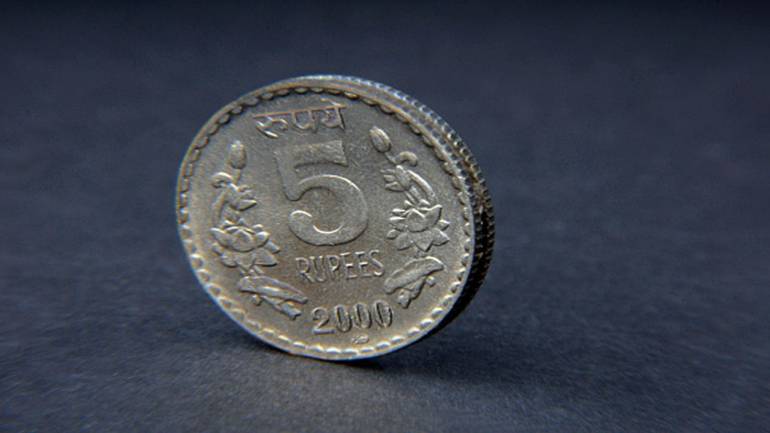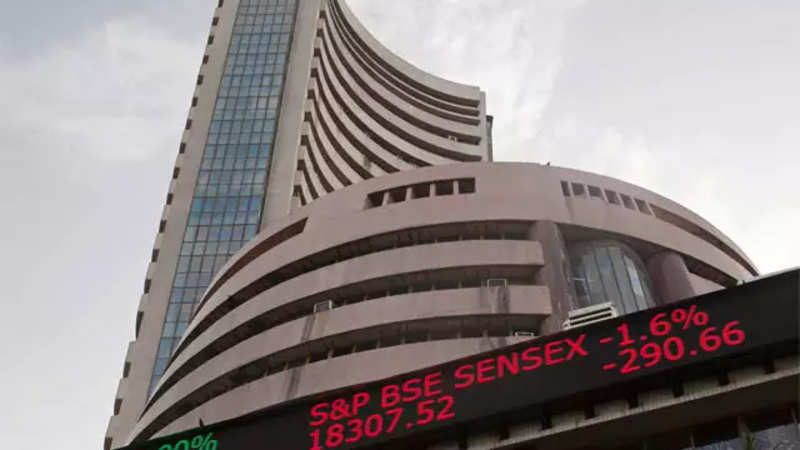Small and retail investors aren’t just the only casualties. Some portfolio management services, too, fell prey to the mid- and small-cap lure. Now, as most of these stocks have no liquidity, one star fund manager of a portfolio management service offered, instead, to return shares to his clients because he can’t sell them.
So much is the pain in the mid-cap sector that since January 2018 investors have lost more than ₹28 trillion in all the corrected stocks. The BSE MidCap and the BSE SmallCap indices lost 21% and 30.7%, respectively, since January 2018.
On the other side of the market cap divide, the large-cap based BSE Sensex has been masking the pain. The bellwether gained 12% since January 2018, and till recently was soaring to new highs, although, within the large-cap universe, only a handful of stocks are driving the index higher. One might be tempted to think that all is well with the market, but that isn’t the case.
Consider this. Of the BSE 500 stocks, 71% have seen negative returns since January 2018 when the slide started. Look at the even wider universe, i.e. all stocks listed on the BSE, and the picture is even grimmer. More than 1,976 stocks traded on BSE have dropped since January—that’s 86% of all traded stocks. Chances are, if you owned 20 stocks, 17 of them would have suffered losses.
Going by the sentiment in the market, it seems small-caps are completely busted for now. Noted market expert Shankar Sharma recently tweeted: “A handful of Nifty stocks is masking the ugly truth that the Indian market, now and over the last 18 months, has been far, far worse than the 2008 meltdown in terms of price damage."
To be sure, the minimum public shareholding norms for public sector undertakings (PSUs) proposed in the budget, if implemented, will not be entirely bad for the markets. Though, this could see an initial adverse reaction, over time, as India’s weights in global MSCI indices improve, it could lead to inflows of over $25 billion.
But in the immediate term, however, hopes of a revival in mid-caps seem to have been dashed by the recent budget proposals. The surcharge on foreign portfolio investors (FPIs) has spooked markets. Besides, the minimum public stake of 35% would tighten liquidity in the market. To top it all, the government is expected to divest ₹1 trillion this year, which would again squeeze money available.
In a liquidity-dried market, smaller companies see fewer investors trading shares. This means that when you want to buy or sell shares, it will take longer to find a buyer or seller. The downside of this is that prices can fall further when one is waiting to sell these shares. That is what is happening in the market right now. Many stocks in the small- and mid-cap universe may not see a revival anytime soon because investor interest is at its low, and still plummeting.
Besides, it’s a sentiment that will not quickly change. Blame it on the new reclassification norms for mutual funds that came in January 2018 or on the surveillance measures of stock exchanges or on the recent liquidity crisis, this mid-cap crisis has only intensified.
Markets regulator Securities and Exchange Board of India recently brought in norms that curbed mutual funds from investing in stocks outside their mandates. Mutual funds then began to weed out mid-cap stocks and shifted to large-cap stocks in a huge way. Shorn of inflows, and due to the heavy selling, this was the start of the southbound journey .
Add to that governance issues which cropped up in most mid- and small-cap counters, further dragging them down. Stocks of companies such as Vakrangee Ltd and Manpasand Beverages Ltd are a case in point.
Of course, to an extent, the crisis in mid- and small-caps aggravated after the Infrastructure Leasing and Financial Services liquidity crisis. As small non-banking financial companies could not raise money, onward lending has been severely hit. Most small businesses are now hard pressed for cash. The liquidity squeeze meant that investors quickly turned risk-averse, and looked askance at mid- and small-caps.
Sure, there are parallels such as the 1992 crash and the 2000 unravelling, and, still recently, the 2008 crash and the 2013 lows. But this mayhem is markedly different. Even in the mid-cap boom phase, excess returns of mid-caps over large-caps were hardly much higher. Returns from mid-caps were about 20% in December 2017. But back in 2010 and 2015, they were 50% and over 28% higher, respectively. This suggests that investors embraced far too high risks in mid- and small-caps for not much higher returns.
Now that the mid-caps have been hammered, returns are 16% lower than in large-caps. Had investors remained with large-cap, they would have been better off with far lower risks.
There is a reason why people chase mid- and small-caps. “If you tell a small investor to buy HDFC Bank, he will not buy it," said Basant Maheshwari, founder of Basant Maheshwari Wealth Advisors Llp. “But he will be more than eager to lap up a small company that is marketed to them as a turnaround story. Everyone wants the next Infosys or Bajaj Finance. Mid-caps and small-caps seem to offer the illusion that investors will surely strike it big. And they buy like they are buying lottery tickets. Markets, though, are brutal.
Besides, there were enough warning signs screaming out loudly through the valuation figures. Sankaren Naren , chief investment officer and executive director of ICICI Prudential Asset Management Co. Ltd, pointed out in late 2017 that mid-caps were significantly overvalued. In January 2018, the National Stock Exchange’s (NSE’s) Nifty Midcap 100 Index was hovering at a price-to-earnings (P-E) ratio of about 52 times (P-E ratio is the current market price of a company’s share divided by the earnings per share of the company). This reflects that investors were willing to pay too stiff a price for projected earnings.
The P-E ratio of the Nifty 50 stood at 26.8 times during the same period. As a result, mid-caps were twice as expensive as large-caps. “It’s actually very simple. Normally, small- and mid-caps trade at a discount to large-caps. But in 2017, mid-caps were trading at a huge premium to large-caps. In such situations, investors need to exercise caution, and if they haven’t there could be a notable impact on their investments.
CAUTION IN THE AIR
Now, what next? Maheshwari envisages that mid- and small-caps will see no recovery in the immediate future. He points out that the economic environment that allows mid- and small-caps to thrive happens only when the economic growth rate goes north of 8%.
When economic growth rates are low, even large firms struggle to report earnings. Unlike large-cap, earnings volatility is rather high in mid- and small-caps. Large firms have to do very well for the small firms to do well enough," Maheshwari explains, pointing out how scores of smaller auto component firms feed on the larger auto manufacturers. If Maruti does well, auto components do well, and that is not happening now.
While mid-caps have fallen to levels where they are quoting at a discount to large-caps, on a stand-alone basis, they have not turned inexpensive. Consider this: the Nifty mid-cap 100’s P-E ratio, which is the measure of how much investors are willing to pay for earnings is hovering around 28.6 times. That’s still higher than the 24.8 times earnings it quoted in November 2015. Naren, though, believes that investors can still do systematic investments for the long term in mid- and small-caps as their outlook post the correction has become better. In the short run, there is much uncertainty. “We are advocating Systematic Investment Plans to slowly and gradually build up a corpus only for the very long haul.
A critical element in the mix is earnings growth. On that count, a large section of the mid-cap stocks is still not out of the woods. “Mid-caps will take at least another quarter or so to recover. Away from the financials, we have still not seen much recovery on the ground. Many sectors are in a cyclical slowdown," .
A section of the market is optimistic that the Reserve Bank of India has more than enough elbow room to cut interest rates. That could prove to be the chief catalyst to boost consumption to an extent, but whether it reflects in earnings growth remains to be seen.
To be sure, some sections and stocks in the mid- and small-cap universe could do well because their valuations have corrected in the last few months. “Whatever fluff was created in 2014 and 2018 is now getting out of the system. That gives us some comfort with a few good mid-caps.
Of course, investors are worried. Sentiment towards mid- and small-caps is at its nadir. Had I told you that earnings growth would be 25% and people are getting stocks at throwaway prices, then people would have jumped in. But that is not the case. People want to wait to see when the recovery happens; only then, they will come in.
BITTER TRUTHS
Expectations regarding a mid- and small-cap recovery are rather low. Having suffered losses, small investors are unlikely to come back into the mid- and small-cap space in a big way—not for some quarters at least. Besides, it’s not going to be a quick or easy recovery.
Maheshwari reckons that stocks don’t go up so much on valuations, but because businesses tell they are prospering from now on. “Small and mid-caps are not in a mode where they can prosper in the current environment."
The markets may have another problem at hand. Large-cap stocks have begun to unravel as foreign investors got spooked due to the imposition of a surcharge on gains. A fall in large-caps can unnerve small investors and dash the hopes of an immediate recovery in mid- and small-stocks. “For small- and mid-caps, while the valuations have corrected, they tend to deliver only after large-caps. At times when large-caps deliver modest returns, small- and mid-caps tend to not do too well.
On the whole, it seems that the pain in small- and mid-cap stocks is here to stay for a lot longer than investors would like. The fallout is that small investors may not return to the markets at all. Small investors are always the last to enter any bull market.
The bitter truth is that many small stocks may not see a recovery at all. Some sections in the market, let’s face it, had gone too far. Many lacked the fundamentals to warrant any investment. If anything, this debacle serves as a stark reminder to investors that there is no free lunch.



















